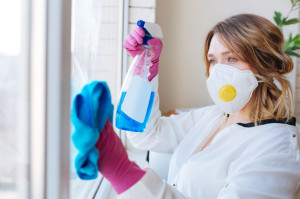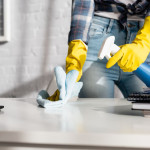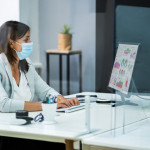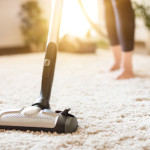 Remember at the start of the pandemic when we didn’t know as much as we do now about COVID-19? It was a scary time, and many of us took extra precautions to stay safe. We wiped down door handles, sanitized every touchpoint, and even washed our groceries. In a CDC report, one woman’s experience washing her groceries illustrates an important lesson.
Remember at the start of the pandemic when we didn’t know as much as we do now about COVID-19? It was a scary time, and many of us took extra precautions to stay safe. We wiped down door handles, sanitized every touchpoint, and even washed our groceries. In a CDC report, one woman’s experience washing her groceries illustrates an important lesson.
The woman created a solution of 10% bleach, water, and vinegar in her kitchen sink. She soaked her produce in the mixture and went about her day. A few minutes later, she smelled a chlorine smell and began to feel woozy and nauseous. Then she started wheezing, and breathing became difficult. She ended up calling 911, where she was diagnosed with mild hypoxemia and end-expiratory wheezing. After being put on oxygen and monitored for a few hours, she was well enough to return home.
This woman’s story is not atypical. In 2020, during the first months of the pandemic, calls to poison control increased sharply due to cleaning and sanitizing. But this type of situation can happen at any time, not just during a pandemic. As trained professional cleaners, we know how to use the cleaning and sanitizing solutions you require safely. Our team has the proper PPE and safety data sheets to ensure their safety and yours while cleaning.
As an employer, it’s up to you to make sure that your cleaning products are used safely, and team members are properly trained. Here are five tips we always recommend:
- Keep Safety Data Sheets close by and up to date for all your cleaning products. These sheets have important safety and usage information that will keep you safe. Here’s a great outline of what Safety Data Sheets are and how to use them.
- Use PPE designed for cleaning. Ensure that any masks or gloves that you use are designed for the type of solutions you will be using. Cloth masks are not up to the task.
- Clean after hours (if possible). The easiest way to protect the clients who visit your business is to keep cleaning activities away from them. If you can schedule major cleaning for after-hours, you can guarantee their safety.
- Keep emergency numbers close by. If an accident occurs, make sure that all emergency numbers are prominently posted and easy to access quickly.
- Don’t mix chemicals. The example from the CDC is a fairly common mistake. Most people know that mixing vinegar and bleach is not safe. But you can’t know every ingredient in all of your cleaning solutions. If you accidentally mix two that create a dangerous reaction, you could be in danger. Always check the label and use each cleaning product safely.
Cleaning accidents are one of the biggest reasons we recommend hiring professionals like us. We have extensive experience and knowledge that can keep you and your employees safe. Keep everyone safe by practicing safe cleaning and sanitation.








